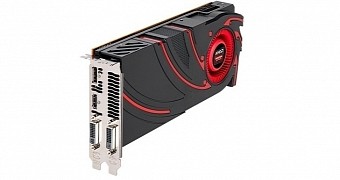We already knew that the AMD Radeon R9 290 and 290X graphics cards had gone down in price, despite the near-total lack of NVIDIA Maxwell graphics adapters for sale, but now we learn that the R9 28x cards have been rendered cheaper as well.
You should be able to check out for yourself by combing through the various online retailers accessible through the Internet.
While there are some websites where the graphics cards still sell for a fair bit of extra cash, it's possible to find the Radeon R9 280, 280X and 285 video boards selling for less than their original MSRPs.
Not that retailers like to stick to the MSRP that much, especially with the high demand that R9 boards have experienced since their release.
Still, AMD has enacted a general price cut to all its R9-series high-end video cards, so vendors have no choice but to follow suit.
The price difference
It varies from website to website, as we said, but it is of between $20 / €20 and $50 / €50, depending on which graphics card we're looking at.
The Radeon R9 285, for example, was launched just last month, for the price of $249 / €190 - €249, but now it bears a tag of $229 / €229.
True, this is the lowest figure you're likely to find, but it's still indicative of a move on AMD's part, even if the company didn't shout it from the rooftops. It also sparks hope that all other web retailers will follow suit.
The Radeon R9 280, meanwhile, has gone from $249 / €249 (which already was a $30 / €30 cut compared to the original MSRP) to $210 / €210 or so.
As for the Radeon R9 280X, the high-end card should be found at $250 - $260 / €250 - €260 instead of the $300 / €300 tag seen before. The biggest price reduction for the best of the trio. Fitting, we suppose.
Why this is both expected and odd
This move was expected because the Radeon R9 290/290X graphics cards got price cuts, and the gap between them and the R9 28x line had to be preserved. Also, now that NVIDIA has released the GeForce GTX 980/970 (thus essentially outpacing AMD in terms of architecture), AMD had to pull attention back to its camp somehow, at least until it launches its own next-gen GPUs, whenever that happens.
However, it's still an odd, or at least ironic, move because NVIDIA's new cards can't exert any influence, seeing as how none of them can be found up for sale, except through some very rare EU retailers.

 14 DAY TRIAL //
14 DAY TRIAL //